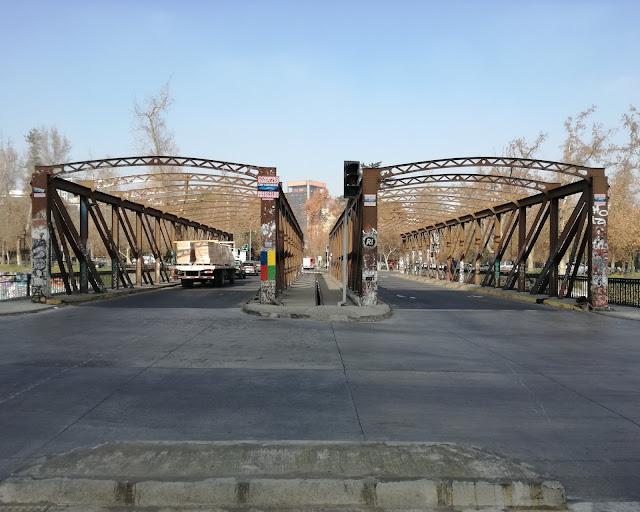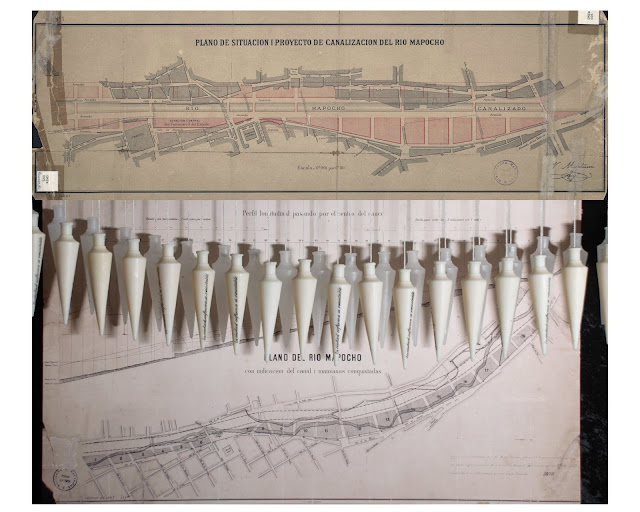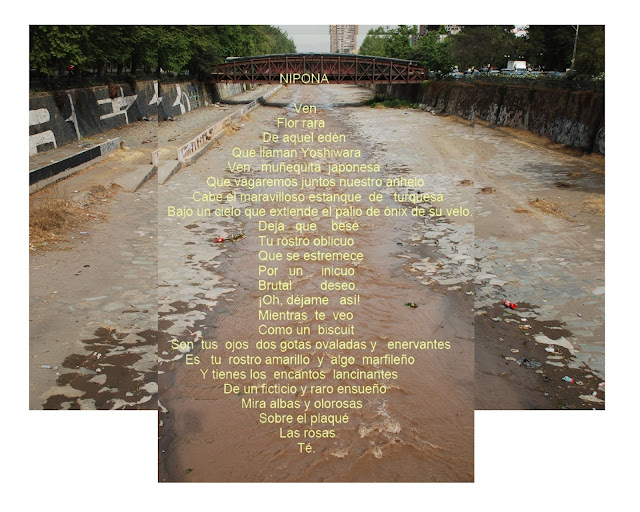Gemela’s Forces
Historical/cultural context (01/03/20)
Puente Loreto originally bridged la Chimba (to the true north) with Las Cañadas (to the true south) of the Mapocho River at the Museo Bellas Artes that was built in 1905 as part of the plan for South America’s Paris around the centenary of Chilean Independence. It was from this metal bridge, on September 11, 1973, that tanks fired on the museum believing it was held up with resistance fighters supporting the Allende government deposed earlier that day. The only injury from the attack on the museum was a bullet wound to the shoulder of a portrait, “Retrato de mi hermana” (Portrait of my Sister) painted by Francisco Javier Mandiola (1820-1900) that was hanging on a wall in the line of fire. The bridge was moved during the Dictatorship, next to its twin, Puente de la Purisima. 300 meters east up the river. Loreto was replaced with a wider retro-classical bridge built at the height of the Cold War for the growing automobile usage of the neo-liberal economic experiment that was Chile. Puente de la Purisima could be either of the two identical bridges now in one location. (Image 7) The twin sisters of Loreto (one of only three Spanish female names ending in O) and Purisima (the virgin mother of Christ), are less ornate, if that is possible, than Los Carros but all three were made and assembled by a Chilean company Lever, Murphy and Co in the port city of Valparaiso, some 100 kilometres from Santiago. The intervention in these bridges will concern movement, force and mistaken identity of identical things.
Puente Loreto originally bridged la Chimba (to the true north) with Las Cañadas (to the true south) of the Mapocho River at the Museo Bellas Artes that was built in 1905 as part of the plan for South America’s Paris around the centenary of Chilean Independence. It was from this metal bridge, on September 11, 1973, that tanks fired on the museum believing it was held up with resistance fighters supporting the Allende government deposed earlier that day. The only injury from the attack on the museum was a bullet wound to the shoulder of a portrait, “Retrato de mi hermana” (Portrait of my Sister) painted by Francisco Javier Mandiola (1820-1900) that was hanging on a wall in the line of fire. The bridge was moved during the Dictatorship, next to its twin, Puente de la Purisima. 300 meters east up the river. Loreto was replaced with a wider retro-classical bridge built at the height of the Cold War for the growing automobile usage of the neo-liberal economic experiment that was Chile. Puente de la Purisima could be either of the two identical bridges now in one location. (Image 7) The twin sisters of Loreto (one of only three Spanish female names ending in O) and Purisima (the virgin mother of Christ), are less ornate, if that is possible, than Los Carros but all three were made and assembled by a Chilean company Lever, Murphy and Co in the port city of Valparaiso, some 100 kilometres from Santiago. The intervention in these bridges will concern movement, force and mistaken identity of identical things.
Image above. the two identical bridges together
Image below, the two identical bridges apart.
Image bottom, the only casuality of the1973 attack against el Museo Bellas Artes from Puente Loreto.
Image below, the two identical bridges apart.
Image bottom, the only casuality of the1973 attack against el Museo Bellas Artes from Puente Loreto.





Comments
Post a Comment